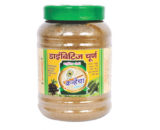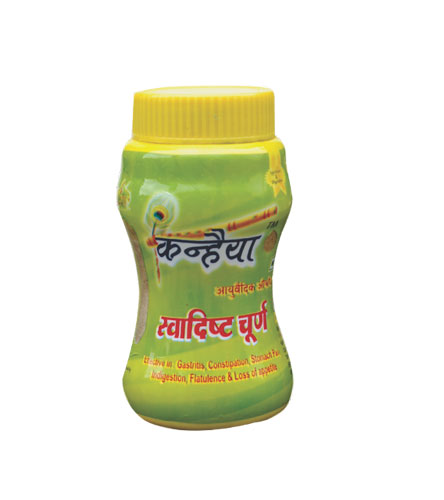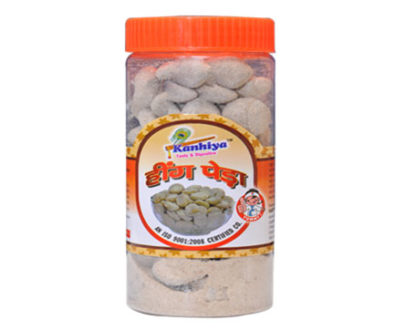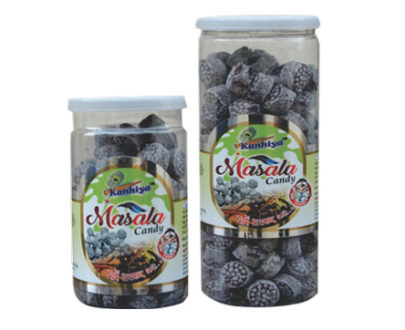| Size |
Price |
| 70 gm |
70 Rs. |
| 150 gm |
100 Rs. |
| 300 gm |
200 Rs. |
| 500 gm |
320 Rs. |
Composition
Each kg churan contains :
| Composition |
Quantity |
| Jeera (Cuminum cyminum) |
100gm |
| Desi ajowan (Trachispermum ammi) |
100gm |
| Dhania (Coriandrum sativum) |
100gm |
| Saindhav (Sodii chloridum) |
80gm |
| Kala namak (Unaqua Sodii chloridum) |
80gm |
| Sonth (Zingiber officinale) |
60gm |
| Saunf (Foeniculum vulgare) |
30gm |
| Kali mirch (Piper nigrum) |
25gm |
| Lavang (Syzygium aromaticum) |
25gm |
| Elaichi badi (Amomum sabulatum) |
20gm |
| Mug piper (Piper longum) |
20gm |
| Dalchini (Cinnamomum zeylanicum) |
20gm |
| Nosadar (Ammonii chloridum) |
20gm |
| Satva Nimbu (Citrus limon) |
10gm |
| Hing (Ferula northex) |
8gm |
| Satva Pudina (Mentha piperita) |
2gm |
| Sakkara (Sucrose) |
q.s. |
Ingredients
Jeera (Cuminum cyminum) used for digestion problems including diarrhea, colic, bowel spasms, and gas. Jeera is also used to increase urine flow to relieve bloating (as a diuretic).
Desi ajowan (Trachyspermum ammi) used as a digestive aid, and combines well with fennel to relieve gas and bloating.
Dhania (Coriandrum sativum) is used for digestion problems including upset stomach, loss of appetite, hernia, nausea, diarrhea, bowel spasms, and intestinal gas. It is also used to treat measles, hemorrhoids, toothaches, worms, and joint pain, as well as infections caused by bacteria and fungus.
Saindhav (Sodii chloridum) is used as a cooling, laxative, digestive, carminative, and stomachic. It is useful in colic, indigestion, enlargement of the liver and spleen. It is good for the eyes and digestive system
Sanchal (Unaqua Sodii chloridum) acts as a digestive aid in reversing constipation and allowing individuals to eliminate flatulence. It is also believed to relieve intestinal gas and heartburn.
Sonth (Zingiber officinale) acts as a appetizer, stimulates appetite, reduces intestine pain, reduces gas and bloating, vomiting, nausea, motion sickness, reduces the toxicity of certain foods and plants , anti-inflammatory of intestine, highly recommended in gastrointestinal ulcers.
Saunf (Foeniculum vulgare) is often used for colic, wind, irritable bowel, kidneys, spleen, liver, lungs, suppressing appetite, breast enlargement, promoting menstruation, improving digestive system, milk flow and increasing urine flow. Fennel is also commonly used to treat amenorrhea, angina, asthma, anxiety, depression, heartburn, water retention, lower blood pressure, boost libido, respiratory congestion and coughs.
Kali mirch (Piper nigrum) cure illness such as constipation, diarrhea, earache, gangrene, heart disease, hernia, hoarseness, indigestion, insect bites, insomnia, joint pain, liver problems, lung disease, oral abscesses, sunburn, tooth decay, and toothaches.
Lavang (Syzygium aromaticum) is used for its warming and stimulating effects in digestive problems. Cloves are used to control hiccoughs and strengthen the kidneys. It controls morning sickness, vomiting and diarrhea. They have anti herpetic action, reduce blood sugar and fever.
Elaichi badi (Amomum sabulatum) stimulant, stomachic, alexipharmic and astringent properties and are prescribed in the treatment of common cold & cough, leucorrhoea, indigestion, vomiting, biliousness abdominal pains and rectal diseases. It is used in gastrointestinal and genito-urinary complaints
Mug piper (Piper longum) is enhancing digestion and metabolism.
Dalchini (Cinnamomum zeylanicum) is used for gastrointestinal (GI) upset, diarrhea, and gas. It is also used for stimulating appetite; for infections caused by bacteria and parasitic worms; and for menstrual cramps, the common cold, and the flu (influenza). It is considered a remedy for respiratory, digestive and gynecological ailments.
Nosadar (Ammonii chloridum) is used in intestinal catarrh.
Satva Nimbu (Citrus limon) pacifies vitiated kapha, vata, flatulence, colic, anorexia, skin diseases, vomiting, fatigue, headache, cough, and peptic ulcer.
Hing (Ferula northex) is used to aid digestion, cure colic, and stagnation in the GI tract. Hing is a powerful antispasmodic useful in cough, asthma, intestinal colic, and uterine spasms. It nourishes the nervous tissue in case of stagnation with high Vata, sciatica, paralysis, and epilepsy.
Pudina satva (Mentha piperita) possesses immunostimulant, digestive, anti-inflammatory, decongestant, expectorant, antibacterial, antifungal, antispasmodic and antiviral agents.
Sakkara (Sucrose) is used as a taste enhancer and instant energy provider.
Indication
- Symptoms related to Irritable bowel symptom : Pain abdomen, dyspepsia, painless morning diarrhoea, abdominal distension & excessive flatus.
- Symptoms related to Peptic Ulcer Symptom : Epigastric pain, hunger pain, night pain, water brash, heartburn, loss of appetite, sense of repletion after meals.
Usage & Benefits
Kanhiya’s Swadist churan is a non-habit forming Digestive tonic and appetizer. Nid’s Swadist churan tones up alimentary canal, improve appetite, regulate digestion, normalize liver function, regulate stool-forming process and thus relieve symptoms commonly associated with disturbances of Gastro-intestinal tract.
Dosage
Two to three gm after every meal or as when required or as directed by the physician.
Side Effects
No adverse/ toxic effects have ever been observed in short/ long term usage of Kanhiya’s Swadist churan in recommended dosage.
Caution
Keep the medicine away from direct sunlight, moisture and reach of children.
Availability
A Pet jar of 60gm, 130gm, 300gm & 500gm.





